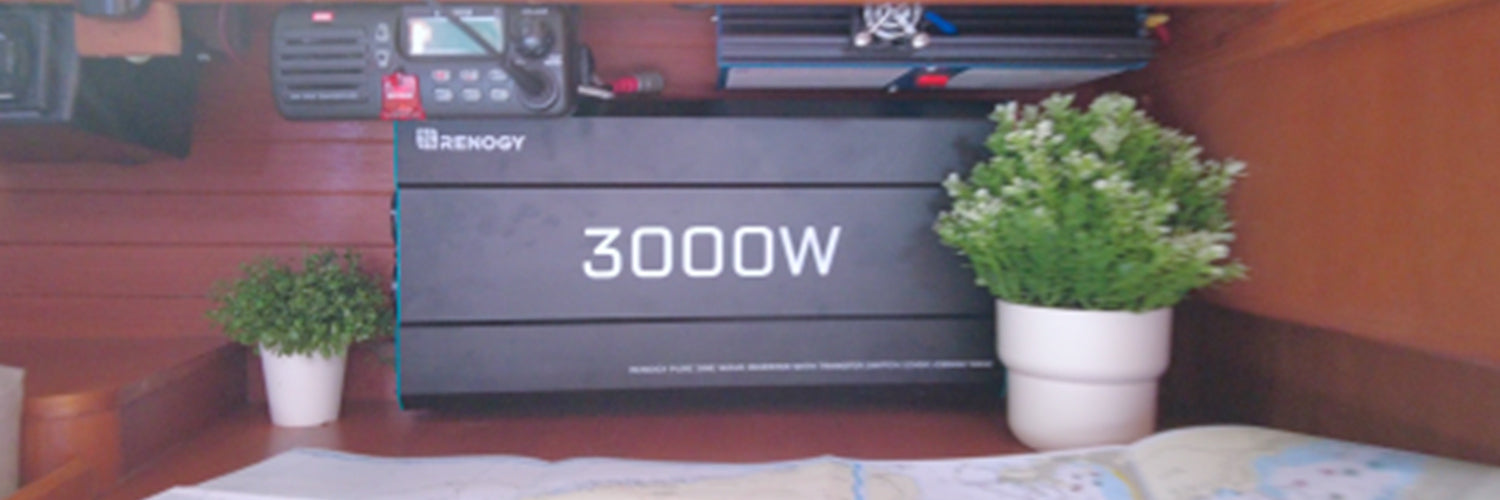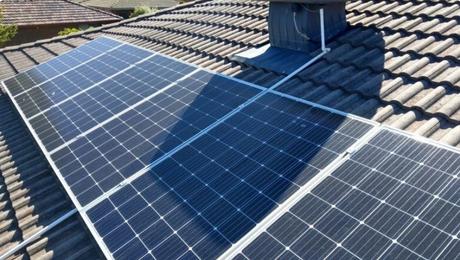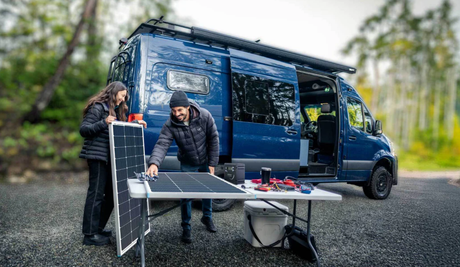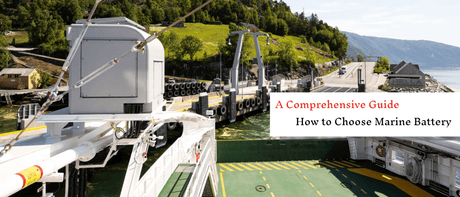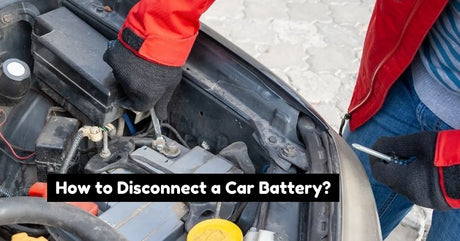You might have heard that certain sources of power, including most renewable energy sources, need to use something called an ‘inverter’. That might seem a little unintuitive - after all, power is power right?
That’s true to an extent. But how that power is delivered to your appliances and gadgets does matter. So when people talk about needing a solar power inverter, what they’re really saying is that most things don’t run off of the kind of raw power that is being produced, and that power needs to be processed before it is consumed.
So strap in, because you’re about to learn everything you need to know about inverters, how they work, how to pick the best one for your purposes, and how they are typically installed in your camper or RV.
Table of contents:
- What is an Inverter?
- What Does a Solar Inverter Do in an RV?
- What Does a Solar Power Inverter Do?
- What is the Difference Between a Solar Power Inverter and a Regular Inverter?
- Should I Use a Modified or Pure Sine Wave Inverter?
- What is a Pure Sine Wave Inverter?
- What is the Difference Between a Modified Inverter and a Pure Sine Wave Inverter?
- What Size Power Inverter Do I Need for My Camper or RV?
- How to Hook Up the Inverter to a Battery:
- Questions and Answers:
- Buy the best solar power inverter
What is an Inverter?
In the simplest terms, an inverter makes DC power usable by AC devices. In the same way that you wouldn’t try to throw a bunch of AA batteries into your computer monitor, you can’t just take the raw DC power that is produced by a renewable source and start up your electric stove.
An inverter runs all of that DC power through a circuit that turns the flat flow of electricity into an oscillating positive and negative wave, which is essentially AC power. The roughest form of inverter makes square waves that have sudden rises and drops. This would be fine for heating and some lighting, but anything more sensitive might malfunction under square wave AC power. It can also produce quite a loud humming sound.

So most inverters for campers and RVs are either pure sine wave inverters, or modified sine wave inverters. You’ll learn about the technical details of those devices shortly, so you can pick the right one for your applications.
The opposite of an inverter is a ‘rectifier’, which is only used to turn raw AC power into a usable DC current. So if you’re wondering how plug-in hybrid cars and DC backup batteries can possibly charge off of the power grid, it’s by using a rectifier.
What Does a Solar Inverter Do in an RV?
As you might have guessed, a solar inverter in an RV makes the solar panels’ power usable by all of your AC devices. It doesn’t need to do this if it’s charging a DC battery for pure power storage, but the inversion has to happen before the power hits any AC circuit breakers or appliances in your camper or RV.
What Does a Solar Power Inverter Do?
A solar power inverter takes the DC current produced by solar cells and converts it into usable AC power. This is done in a couple of different ways:
A solar power string inverter takes the power of every solar device in your array and converts it all at once. These are more heavy duty inverters, capable of handling between 1kW and several dozen kW of power depending on the model.
There are also solar microinverters. These are attached directly to each solar panel, and they pre-convert the energy flow as it leaves the panel. They’re generally only useful for smaller panels or panel groups, having a maximum of 1 kW of power throughput per microinverter.
Most people will opt for a solar power string inverter, because it’s cheaper and there are less things that can go wrong. But for more scientific applications that require individual panel monitoring, and for certain edge cases, some people will make use of a solar microinverter.

What is the Difference Between a Solar Power Inverter and a Regular Inverter?
Solar power inverters and regular inverters have the same function of converting DC power to AC power, but they are varied in several ways.
A solar inverter can convert the DC power for both solar panels and batteries, while a regular inverter can only convert the DC power stored in batteries.
The connection to solar panels can result in an unsteady output of solar inverters. The culprit is that solar panels cannot produce a steady flow of power due to peak sun hours, spots of rains, heavy cloud cover, smoke, or any kind of solar disruption. As a result, most solar power inverters are integrated with additional Maximum Power Point Tracking (MPPT) technology to mitigate the impact of shading.
In home-based installations, solar power inverters might also have smart features that allow you to sell excess energy back to the grid. These are called grid-tied solar inverters. In contrast, regular inverters are rarely used for grid-tied installations;as mentioned before, they can only work with batteries.
When it comes to the off-grid solar system installation in campers and RVs, both types of inverters can be used. Nonetheless, a solar power inverter is always preferable for solar power system installations.
Should I Use a Modified or Pure Sine Wave Inverter?
There are a few basic rules to consider when picking between a modified sine wave inverter and a pure sine wave inverter:
- Anything running a motor needs a pure sine wave inverter.
- Anything subject to signal strength loss or interference needs a pure sine wave inverter.
- If you’re only running devices that have their own DC power bricks, you can use a modified sine wave inverter.
In a nutshell: It’s always safe to run a pure sine wave inverter over a modified sine wave inverter, but not the other way around. But why? What makes these two devices different?.

What is a Pure Sine Wave Inverter?
A pure sine wave inverter produces a less choppy AC output than other types of inverters. The oscillation between the positive and negative poles is far smoother than what you might see in a square wave (also known as ‘two-step’) and modified sine wave (also known as ‘three-step’) inverter.
This added smoothness will allow you to run more sensitive and timing-dependent devices without power based interference. Devices such as radios, open air TVs, medical devices, and anything with an engine or motor are far more reliable on pure sine wave inverters.
More related information are available in “ Are Pure Sine Wave Inverters the best?”. Check it out!
What is the Difference Between a Modified Inverter and a Pure Sine Wave Inverter?
A modified inverter, on the other hand, produces ‘squarish’ AC waves because it’s only using three phases of output: Peak positive, zero, and peak negative. While better than a square wave (which is just peak positive and peak negative), more delicate applications might not do very well on this type of power.
For whole RV, camper, or boat operations, a pure sine wave inverter is generally preferred. If you have an entirely separate DC power feed that is dedicated to a specific AC output used for something more primitive, that might be a candidate for a modified inverter.
What Size Power Inverter Do I Need for My Camper or RV?
As an example of typical solar power inverter capacities used in campers, RVs, and boats, have a look at Renogy's inverter line.
You’ll see that these devices range from 700 W to 3,000 W of capacity. The key here is that the inverter should be rated higher than your peak solar throughput. So if your panels can produce a combined 1.8 kW, such as an array of nine 200 Watt Monocrystalline solar panels, you would want a 2000 W inverter or better. The higher the pure sine wave inverter’s rating, the more room you have for future expansion.

In order to figure out how many solar panels you need, and therefore how big of an inverter you want to get, use an solar calculator. Pay particular attention to your high energy usage items, such as air conditioning.
You may want to dedicate some extra capacity, both in your solar panel selection and your solar power inverter choice, to charging a battery for use when the sun isn’t shining. It depends on your preferred lifestyle of course, but it’s always nice if you can avoid roughing it when you’re just trying to relax.
Now select a solar inverter for your installation.
How to Hook Up the Inverter to a Battery:
So now you’re probably wondering if there’s a device that can easily hook your solar panels up to your pure sine wave inverter, and to battery storage as well without the risk of overcharging. There is!
It’s called a charge controller. These great little devices help to manage the power flow so that you have AC power when you need it, and so your DC battery gets charged, but not overcharged. A 60 Amp Rover will automatically detect the voltage coming in, and protect your system against reverse polarity and reverse flow issues that might otherwise complicate battery charging or damage electrical devices.
Or you can opt for a complete off grid solar kit that includes panels, an appropriate charge controller, and all of the miscellaneous things you need to connect them. These kits will tell you the maximum number of solar panels that you can expand to, allowing you to easily plan your entire setup.
Then you just need to pick a deep cycle battery. The type is going to depend on the maximum voltage you need for your devices, and how much total capacity you want. For example, this 24 Volt 50 Amp-hour battery represents about 1.2 kW/h of energy. You can string up to eight of them together if you have the room, for a total of 9.6 kW/h of storage.
If you don't want to make this calculation yourself, just give the results of your solar calculator to your provider and ask them for a recommendation. They’ll ask you some additional questions about your devices, available space, and off-peak power usage, and then give you the best battery options.

Wiring the inverter to the battery is fairly straightforward. Generally the wires will be color coded, red being positive and black being negative. Hook up each cable to the battery first, then connect it to the correctly labeled mount on the inverter. Make sure that the colors match, or you might have a short or fire on your hands.
For a detailed example of inverter installation instructions, check out the manual for a Renogy pure sine wave inverter. Page nine is where the installation instructions begin.
Questions and Answers:
If you just had one of these specific questions, here’s a quick answer guide that you can reference!
Why Do You Need an Inverter for Solar Panels?
Solar panels produce DC current. Most of your appliances expect AC power. In order to convert from one to the other, you need an inverter. The most compatible type is called a pure sine wave inverter.
How Many Solar Panels Do I Need for an Inverter?
At least one! The inverter’s rating refers to the maximum throughput, not the minimum. If you want to almost fully load your inverter during peak sun hours, you will want to match the total panel capacity to the inverter rating.
For example, you can run six 175 W flexible solar panels into a 1kW pure sine wave inverter to cap it out. Or you can start with less panels and expand up to the limit later on. Because of this you can ‘oversize’ your inverter to make room for future expansion. It doesn’t need to be running at full capacity, that’s just what’s available.
Can I Connect an Inverter Directly to a Solar Panel?
In theory, under perfect conditions, yes. But in reality, it rarely works out correctly.
The reason you use a charge controller, as well as fuses in the appropriate places, is to regulate power flow even when the voltage is variable. A 12V solar panel will average 12V of output, but could be producing more or less depending on conditions. Without some way to regulate that power flow, most inverters will simply not function correctly.
If you don’t want to use a charge controller, for example if you don’t ever plan to use a battery, you’ll still want fuses and some kind of rectifier in between your solar panels and your inverter. Otherwise you risk malfunction and damage to the system and attached appliances or devices.
Does an Inverter Need a Battery?
An inverter doesn’t need a battery. Most people find it highly useful to have at least a small battery, so that their energy use isn’t suddenly and rudely interrupted. But it isn’t a strict requirement.
What Can a 3000 Watt Pure Sine Wave Inverter Run?
With a full 3kW of solar panels attached, at peak sun time in your area, your inverter can run quite a bit! For example, you could simultaneously run a 1,500W induction cooker and a 1,500W air conditioner. Or you could simultaneously run a laptop, a TV, a fan, a refrigerator, and a high powered electric frying pan.
Using a solar calculator can help you figure out your wattage and amperage limitations, as well as which devices you should never use at the same time.
Buy the best solar power inverter
Renogy will the best place to buy your own solar power inverter for home or RV. We offer a range of pure sine wave inverters of various parameters, as well as solar panels for sale, charge controllers, lifepo4 batteries, and wires. At Renogy, you will be able to enjoy one-stop shopping experience for off-grid solar installations.

Related articles:
Is A 2000 Or 3000 Watt Inverter Charger Right For You?
Should you purchase a solar inverter charger?
How Do Solar Panels Work: Things You Should Know

